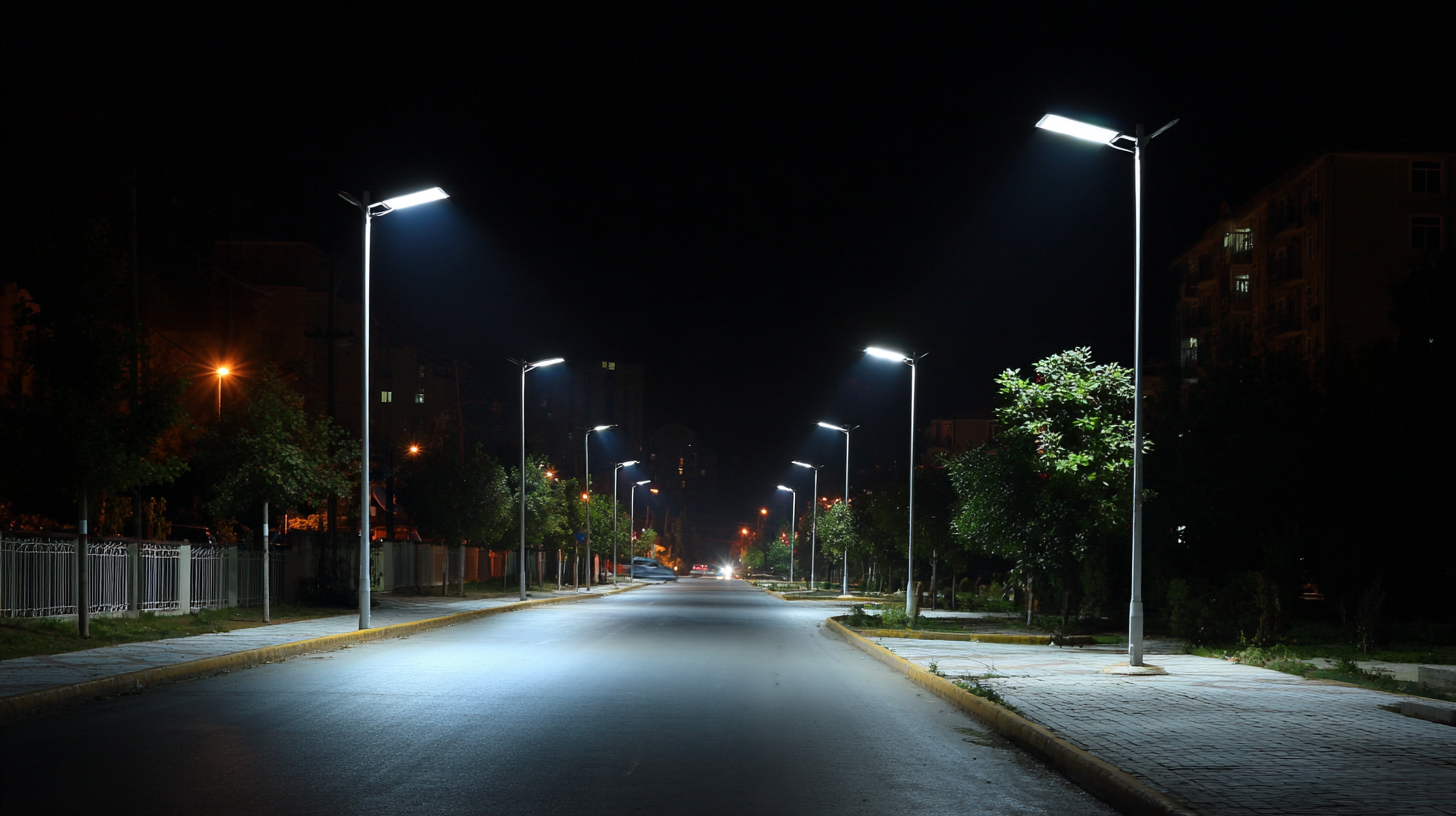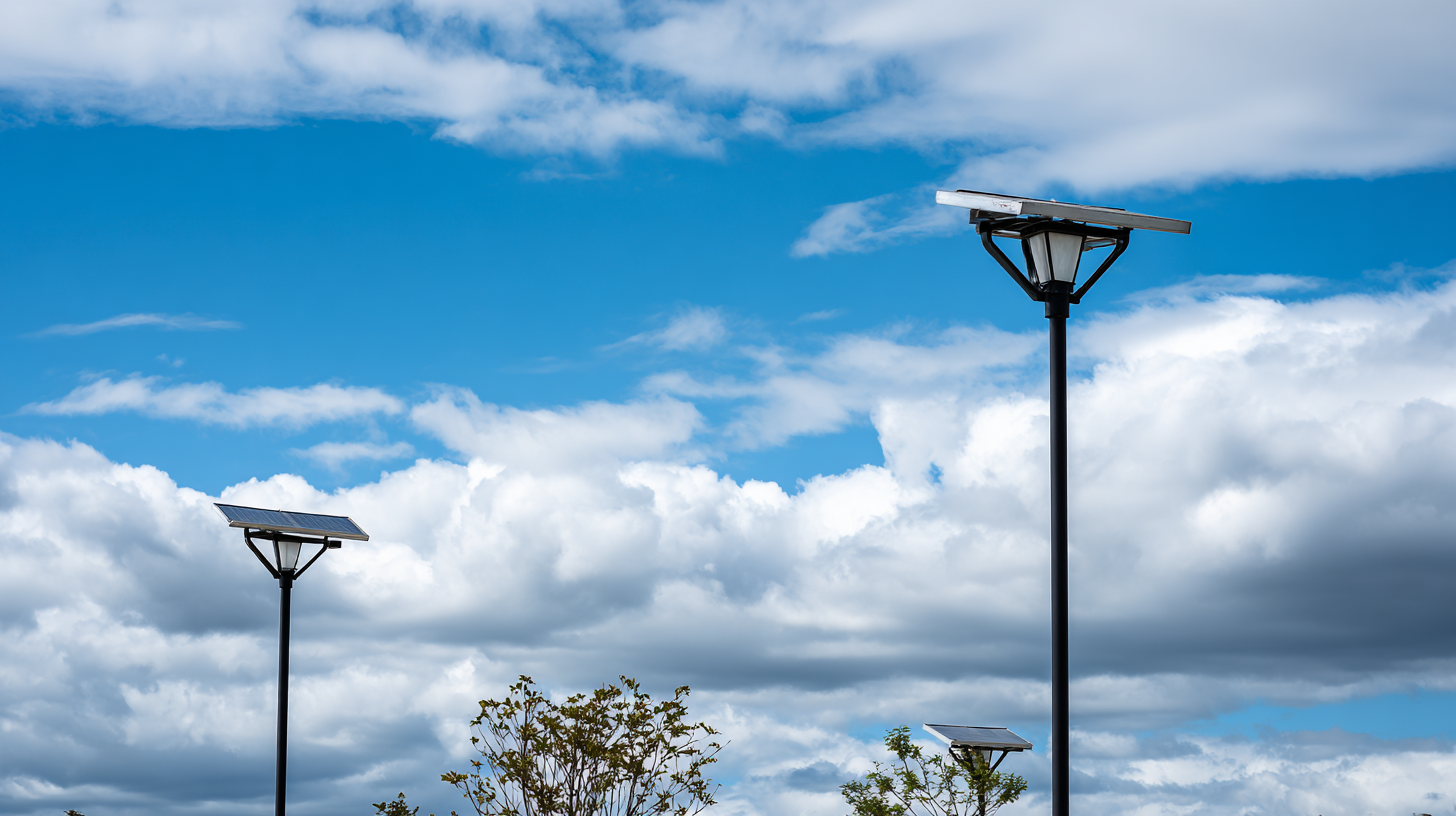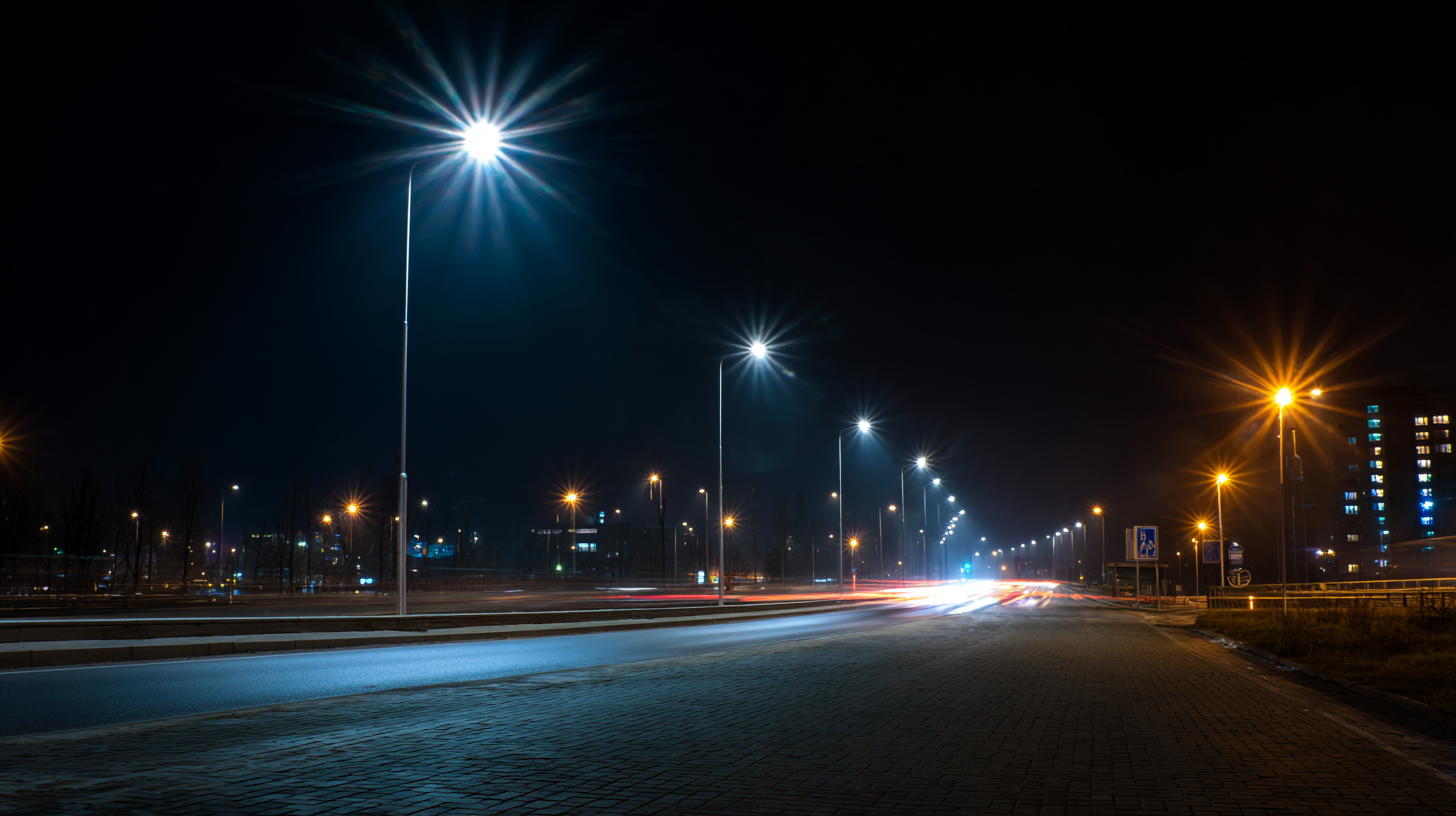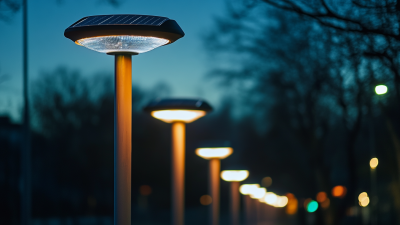What Are Solar Street Lamps and How Do They Transform Urban Lighting?
As urban environments continue to evolve, the advent of solar street lamps presents a transformative approach to public lighting. These innovative solutions harness solar energy, offering a sustainable and cost-effective alternative to traditional grid-connected lighting systems. According to the International Energy Agency, the global market for solar street lamps is projected to grow significantly, with an estimated increase of over 25% in adoption rates by 2025. Additionally, a report by the Global Solar Council indicates that integrating solar street lamps not only enhances energy efficiency but also contributes to reducing carbon footprints in cities. With the capability to operate autonomously and adapt to various urban landscapes, solar street lamps are revolutionizing urban lighting by providing enhanced visibility, safety, and aesthetic appeal, all while addressing the pressing challenges of energy consumption and environmental impact.

Understanding Solar Street Lamps: Definition and Components
Solar street lamps are innovative lighting solutions powered by renewable energy, which consist of several key components. These lamps typically include photovoltaic (PV) panels, LED lighting, batteries, and a control system. The PV panels collect sunlight during the day and convert it into electricity, charging the batteries that store energy for nighttime use. Remarkably, LED technology used in these lamps is more efficient than traditional lighting, consuming about 75% less energy while providing superior brightness and longevity. According to a report by the International Renewable Energy Agency (IRENA), the adoption of solar street lighting can reduce carbon emissions by up to 50% in urban areas.
When considering the installation of solar street lamps, it’s essential to assess the location and sunlight availability. This can significantly impact the efficiency of the solar panels. Additionally, integrating smart technology can enhance functionality; for instance, motion sensors can conserve energy by dimming lights when no movement is detected.
Tips: When choosing solar street lamps, ensure they have high-quality LED fixtures and efficient solar panels for optimal performance. Regular maintenance checks will also maximize their lifespan and effectiveness, ensuring that urban spaces remain well-lit and secure.
Solar Street Lamps vs. Traditional Street Lamps: Energy Efficiency Comparison
This chart compares the energy consumption of solar street lamps and traditional street lamps. Solar street lamps consume approximately 200 kWh per year, significantly lower than the 1000 kWh consumed by traditional street lamps, highlighting the energy efficiency advantages of solar technology in urban lighting solutions.
The Environmental Benefits of Solar Street Lighting in Urban Areas
 Solar street lamps are rapidly transforming urban lighting, offering significant environmental benefits that cannot be overlooked. According to a report by the International Renewable Energy Agency, solar lighting can reduce greenhouse gas emissions by up to 50% compared to traditional street lighting. This is primarily due to the reliance on solar energy, which is a clean and renewable resource. By utilizing solar panels, these lamps harness sunlight during the day to provide illumination during the night, effectively decreasing the reliance on fossil fuels and contributing to lower carbon footprints in metropolitan areas.
Solar street lamps are rapidly transforming urban lighting, offering significant environmental benefits that cannot be overlooked. According to a report by the International Renewable Energy Agency, solar lighting can reduce greenhouse gas emissions by up to 50% compared to traditional street lighting. This is primarily due to the reliance on solar energy, which is a clean and renewable resource. By utilizing solar panels, these lamps harness sunlight during the day to provide illumination during the night, effectively decreasing the reliance on fossil fuels and contributing to lower carbon footprints in metropolitan areas.
Moreover, solar street lights are beneficial for urban ecosystems. A study by the U.S. Department of Energy indicated that shifting to solar street lighting could save cities approximately $1.4 billion in energy costs annually by 2030. Additionally, solar street lamps promote biodiversity by minimizing light pollution, which can harm wildlife and disrupt natural habitats. Enhanced urban greenery and improved nocturnal environments foster richer biodiversity, as these lights can be strategically placed in parks and natural reserves, providing necessary visibility without the adverse effects of conventional lighting systems.
How Solar Technology Enhances Public Safety and Connectivity
Solar street lamps are revolutionizing urban lighting by enhancing public safety and connectivity in cities worldwide. According to the Solar Energy Industries Association, the use of solar street lighting systems can reduce energy costs by approximately 50-80%. These lamps are not only energy-efficient but also promote sustainability by utilizing renewable energy sources. The integration of solar-powered lighting in urban areas has shown a significant reduction in crime rates as illuminated spaces deter illegal activities, allowing citizens to feel safer while navigating their neighborhoods.
Moreover, the deployment of solar street lamps often includes smart technology features, such as Wi-Fi connectivity and sensor systems. These features can inform city authorities about lighting performance and maintenance needs, leading to more efficient resource allocation. A report from the International Renewable Energy Agency suggests that smart street lighting could save cities up to 30% in operational costs, which can be reallocated to other critical urban improvements.
**Tips for Cities Considering Solar Street Lamps:**
1. Assess the specific needs of each area before implementation, ensuring that the lighting covers high-traffic and vulnerable spaces.
2. Consider incorporating smart technology that enhances connectivity and provides valuable data analytics for urban management.
What Are Solar Street Lamps and How Do They Transform Urban Lighting?
| Feature |
Description |
Benefit |
| Solar Panel |
Converts sunlight into electrical energy |
Reduces electricity costs and dependency on grid |
| LED Lighting |
High-efficiency light source |
Longer lifespan and lower energy consumption |
| Motion Sensors |
Activates lighting based on movement detection |
Enhances safety by increasing light when needed |
| Wi-Fi Connectivity |
Provides internet access in public areas |
Improves connectivity and community engagement |
| Smart Control System |
Remote monitoring and management |
Optimizes energy use and maintenance scheduling |
Cost-Effectiveness of Solar Street Lights Versus Traditional Lighting
Solar street lamps represent a sustainable alternative to traditional street lighting, combining renewable energy with urban infrastructure. One of the most compelling advantages of solar street lights is their cost-effectiveness. Initially, they may have higher installation costs compared to conventional lighting systems. However, their operational expenses are significantly lower since they harness solar energy, drastically reducing electricity bills.
Additionally, solar lamps often require less maintenance due to fewer moving parts and the absence of cables, which can be prone to weather damage.
Moreover, the long-term financial benefits are substantial. With rising energy prices and the increasing demand for environmentally friendly solutions, municipalities and urban planners are considering solar street lights not only for their aesthetic appeal but also for their potential to save money over time. By eliminating dependency on the grid and taking advantage of a free power source, cities can redirect funds saved from lighting expenditures into other vital community projects. In essence, solar street lamps provide an efficient lighting alternative that supports sustainability while improving urban safety and infrastructure flexibility.
Future Trends: Innovations in Solar Street Lamp Design and Functionality
The future of urban lighting is being transformed by innovative designs and functionalities in solar street lamps. As cities strive to become more sustainable, these solar-powered solutions are leading the charge with their ability to harness renewable energy. Recent advancements include integrated smart technologies, such as motion sensors and adaptive lighting, which adjust brightness based on real-time pedestrian and vehicular traffic. This not only conserves energy but also enhances safety by providing brighter lighting exactly when and where it’s needed.
Moreover, solar street lamps are increasingly being equipped with features such as Wi-Fi connectivity and environmental monitoring sensors. These advancements allow for the gathering of urban data, which can be used to inform city planners and improve public spaces. The use of advanced materials and aesthetic designs also ensures that these lamps meet the demands of modern urban architecture while providing eco-friendly lighting solutions. As innovation continues, solar street lamps are set to redefine the lighting landscape, making our cities smarter and more environmentally friendly.



 Solar street lamps are rapidly transforming urban lighting, offering significant environmental benefits that cannot be overlooked. According to a report by the International Renewable Energy Agency, solar lighting can reduce greenhouse gas emissions by up to 50% compared to traditional street lighting. This is primarily due to the reliance on solar energy, which is a clean and renewable resource. By utilizing solar panels, these lamps harness sunlight during the day to provide illumination during the night, effectively decreasing the reliance on fossil fuels and contributing to lower carbon footprints in metropolitan areas.
Solar street lamps are rapidly transforming urban lighting, offering significant environmental benefits that cannot be overlooked. According to a report by the International Renewable Energy Agency, solar lighting can reduce greenhouse gas emissions by up to 50% compared to traditional street lighting. This is primarily due to the reliance on solar energy, which is a clean and renewable resource. By utilizing solar panels, these lamps harness sunlight during the day to provide illumination during the night, effectively decreasing the reliance on fossil fuels and contributing to lower carbon footprints in metropolitan areas.






